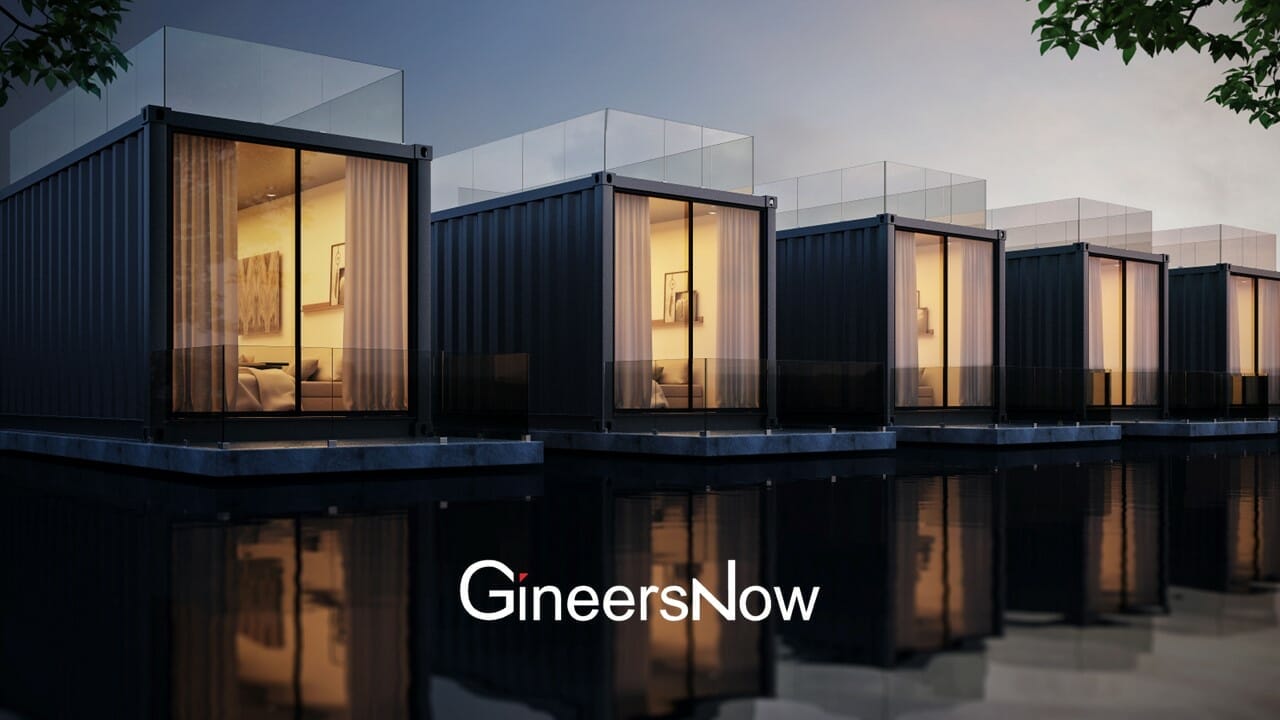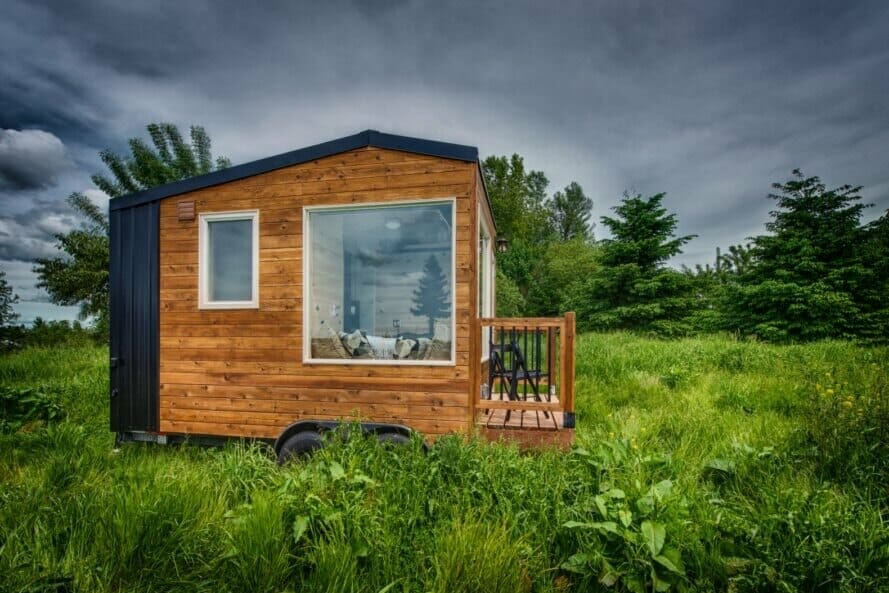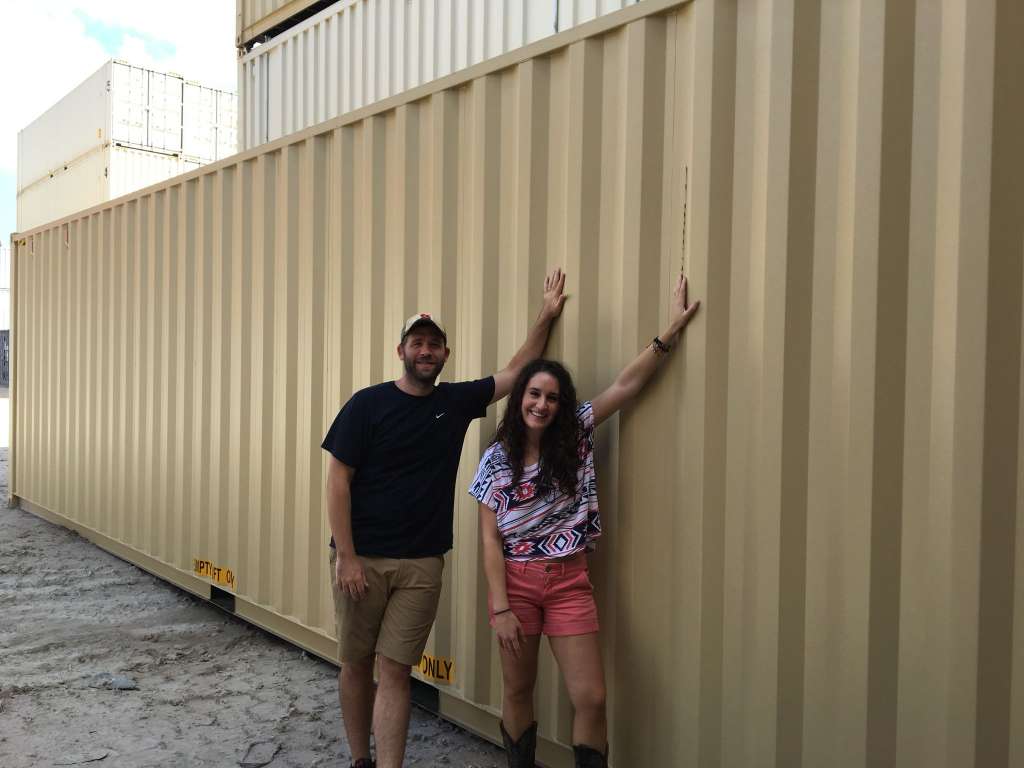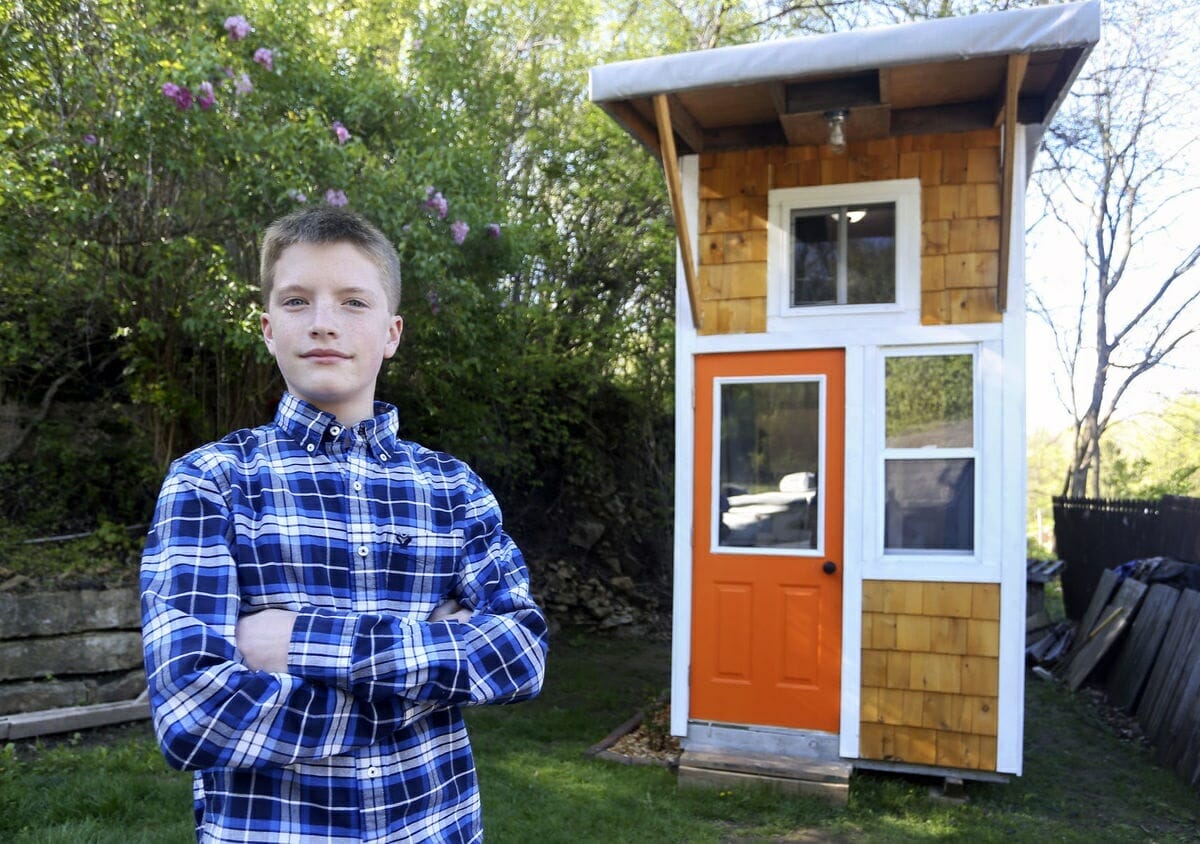Just imagine waking up to the sweet sound of birds chirping and the warm sunshine streaming through a cozy, well-designed space that’s just perfect for you. Tiny house designs in the Philippines have become popular, where beautiful landscapes and vibrant communities have inspired some really creative designs that make the most of every single inch of space. Whether you’re dreaming of a minimalist retreat by the beach or a stylish urban sanctuary, there’s something truly special about these compact homes that perfectly blend functionality with style.
In this article, we’ll examine eight amazing tiny house designs in the Philippines that are guaranteed to make your heart skip a beat. From clever storage solutions to eco-friendly features, each design tells its own unique story while also focusing on sustainability and comfort. Get ready to be inspired as we explore these innovative spaces that prove that great things do come in small packages!
What is a Tiny House?
Tiny house designs in the Philippines are much more than just a smaller dwelling; they represent a deliberate lifestyle choice that emphasizes minimalism, sustainability, and intentional living. These compact homes seamlessly combine modern aesthetics with local craftsmanship, creating unique sanctuaries that embody both innovation and tradition. Limited space presents creative opportunities—think multipurpose furniture and ingenious storage solutions that transform small spaces into functional living, working, and relaxing areas.
Tiny house designs in the Philippines go beyond their size and often promote a deeper connection with nature. The breathtaking Philippine landscapes serve as stunning backdrops for these mini homes, from spectacular coastal vistas to tranquil mountain settings. This emphasis on location emphasizes eco-friendly designs that blend with the environment and reduce carbon footprints. As communities across the archipelago embrace this trend, we’re witnessing an exciting architectural evolution—one where practicality and beauty come together in pleasantly unexpected ways.

1. Rustic Charm: Traditional Filipino Design Elements
Traditional Filipino design is characterized by its rustic charm, skillfully blending nature with cultural heritage. Tiny house designs in the Philippines often feature warm colors and textures using locally sourced materials such as bamboo, nipa palm, and hardwood, reflecting the stunning landscapes of the archipelago. The incorporation of intricate handcrafted details, such as capiz shell windows (windowpane oysters) and carved wooden accents, not only adds a distinctive touch but also honors the skilled artisans whose craftsmanship reflects the resilience and resourcefulness passed down through generations.
In these compact spaces, traditional Filipino elements bring a sense of modern living by embracing simplicity without compromising beauty. The open-air layouts promote airflow and create a connection with the vibrant outdoors, echoing the Filipino values of community and hospitality. Moreover, including native plants in garden designs enhances aesthetic appeal and fosters biodiversity, resulting in tiny havens that are both functional and environmentally friendly.
Upon exploring tiny house designs in the Philippines, it becomes evident that rustic charm encompasses more than just appearance; it is a lasting philosophy that invites inhabitants to find comfort in harmony with their surroundings.
2. Modern Minimalism: Clean Lines and Functionality
Tiny house designs in the Philippines exemplify modern minimalism, a concept centered on the idea of “less is more.” These homes feature clean lines, functional elements, and a serene environment, fostering mindfulness and intentional living. Minimalist aesthetics are characterized by maximizing space and creating a soothing atmosphere where every element serves a purpose.
These homes use multifunctional furniture to enable flexible living arrangements, while large windows bring in natural light, enhancing the feeling of spaciousness. Filipino architects are blending modernity with tradition by incorporating local materials like bamboo and nipa palm into these designs. This not only honors cultural heritage but also promotes sustainability as these resources are locally sourced.
Exploring different tiny house designs in the Philippines reveals that modern minimalism represents more than just housing. It embodies a lifestyle that prioritizes clarity over clutter while emphasizing experiences and connection with nature over material possessions.
3. Sustainable Solutions: Eco-Friendly Tiny Homes
In the Philippines, there is a growing demand for innovative tiny house designs that embody sustainable living. These designs utilize materials like bamboo, reclaimed wood, and other locally sourced resources to minimize environmental impact and enhance the natural aesthetic of each dwelling. Incorporating green roofs and energy-efficient systems, these designs aim to reduce carbon footprints while blending harmoniously with the lush Filipino landscape.
Beyond their visual appeal, these tiny house designs in the Philippines promote a lifestyle centered on simplicity and minimalism. Many builders integrate solar panels and rainwater harvesting systems, allowing these homes to harness nature’s gifts rather than exploit them. As rural communities adopt these eco-friendly concepts, they contribute to community resilience and demonstrate how sustainability can thrive amid economic challenges. These initiatives also invite more people to embrace conscious living in the midst of beautiful surroundings.
4. Container Homes: Innovative and Affordable Options
Container homes have brought about a remarkable shift in tiny house designs in the Philippines, merging sustainability and modern aesthetics. These novel structures not only offer a distinctive living experience but also provide an economical answer to the challenges of urban housing. By using shipping containers as the building blocks, there’s room for creativity and adaptability, allowing you to craft a space that mirrors your individual style while still being functional.
Picture turning these industrial containers into comfortable retreats, equipped with contemporary conveniences and eco-friendly features such as rainwater harvesting systems and solar panels. With the increasing focus on minimalism and environmental awareness, container homes resonate deeply with those who desire a simpler lifestyle without compromising on comfort. Moreover, their modular nature permits an array of customization options, from multi-container complexes to single-unit hideaways, making them an attractive prospect for prospective homeowners interested in embracing tiny house designs in the Philippines.
5. Treehouses: Nature-Inspired Getaways in the Sky
Just imagine waking up in a delightful tiny house design in the Philippines, like a cozy treehouse tucked among the branches, where nature is an essential part of your living space. Tiny house designs in the Philippines seamlessly incorporate indigenous materials and architectural elements, creating elevated havens that offer a serene retreat above the forest floor. These unique structures not only provide shelter but also inspire a lifestyle rooted in sustainability and simplicity.
Many Philippine treehouses embrace eco-friendly principles by utilizing reclaimed wood and solar energy systems, effectively blending modern comforts with the essence of nature. As urban heat becomes increasingly challenging, more individuals seek elevated sanctuaries that encourage mindfulness amidst breathtaking panoramic views, making them perfect for unwinding after a busy week. Whether it’s for a romantic escapade or quality family time, these awe-inspiring treehouses redefine the concept of luxury living in minimal spaces while serving as a poignant reminder to nurture our connection with the marvels of nature.
6. Modular Designs: Flexible Living Spaces for Families
Modular designs in tiny house construction offer a high level of flexibility, especially for families looking to maximize their living spaces. In the context of tiny house designs in the Philippines, these modular layouts allow for easy expansion or reconfiguration to meet changing needs, such as accommodating new family members or creating multifunctional areas that can adapt from playrooms to home offices. This adaptability enables families to allocate spaces according to their lifestyle without being restricted by traditional floor plans.
Furthermore, modular tiny houses often utilize sustainable materials and innovative building techniques, which align with the environmentally conscious philosophies prevalent among Filipino homeowners today. They offer a platform for personalization, allowing families to customize colors, textures, and room functions while reducing the environmental impact. By embracing such designs, Filipino families make efficient use of limited space and foster a sense of community by sharing common areas that encourage interaction and cooperation, which is crucial in densely populated urban settings.
7. Beachfront Bliss: Coastal Tiny House Retreats
Coastal tiny house designs in the Philippines showcase breathtaking beachfront views and also embrace sustainable living by harmoniously integrating modern amenities with traditional coastal charm. These unique designs incorporate local materials and aesthetics, creating a seamless blend of comfort and style. Featuring large windows that capture panoramic ocean views and allow refreshing sea breezes, these tiny houses prioritize space efficiency through open-concept layouts and clever storage solutions. Additionally, the multifunctional furnishings maximize interior comfort while maintaining minimalist elegance. Moreover, the outdoor decks provide the perfect setting for admiring sunsets or stargazing, offering a tranquil escape where one can truly appreciate nature’s splendor by the sea.
8. Urban Dwellings: Compact Homes in City Environments
Urban living in the Philippines is undergoing a transformation with the rise of tiny house designs that cleverly combine functionality and aesthetic appeal. In densely populated areas like Metro Manila, where space is at a premium, these compact homes offer innovative solutions to modern urban challenges. By making use of vertical spaces and multi-functional furniture, homeowners are not only maximizing space but also creating environments that promote creativity and sustainability.
Local materials and inventive architectural techniques are being employed to enhance the visual appeal of these tiny houses while paying homage to Filipino craftsmanship. From bamboo walls to roof gardens, these designs bring nature into the city and promote eco-friendly living practices.
In addition, there is a growing trend of community-driven initiatives, with residents of these compact homes sharing communal spaces to foster social interactions and a sense of belonging in the midst of urban life. The emergence of tiny house designs in the Philippines represents a promising direction for sustainable urban development, demonstrating that a minimalist approach can lead to the creation of beautiful and functional urban habitats.
The Appeal of Tiny House Living Among Filipinos
The concept of tiny house living extends beyond its visual appeal, encompassing a lifestyle rooted in simplicity, sustainability, and creativity. In the Philippines, the diverse array of tiny house designs reflects an architectural response to urban density and rural charm. These designs often prioritize the use of local materials such as bamboo and nipa palm, seamlessly blending with the natural landscapes and promoting eco-friendly living. This strong connection to nature enhances the living experience and fosters a sense of community among proponents of this minimalistic approach.
Furthermore, tiny houses offer unparalleled opportunities for personalization that larger homes often cannot provide. Filipino owners can integrate elements reflecting their cultural heritage or personal interests, effectively transforming each space into a unique canvas of self-expression. From versatile furniture that maximizes limited square footage to innovative storage solutions and creative outdoor extensions, tiny house designs in the Philippines inspire creativity without sacrificing comfort. In a world dominated by consumerism, embracing this conscious lifestyle encourages individuals to find joy in simplicity, prioritizing experiences over possessions and relishing life’s simple pleasures within inspiring natural surroundings.
Endnote: Best Tiny House Designs in the Philippines
Embracing the tiny house movement in the Philippines goes beyond just looks; it’s all about choosing a lifestyle that promotes simplicity, sustainability, and community connection. When we look at the various tiny house designs in the Philippines, it’s incredible to see how people are coming up with innovative ideas to make the most of small spaces while still keeping things stylish. Each design not only shows personal style but also a strong appreciation for Filipino craftsmanship and resourcefulness.
Just picture waking up every morning in a carefully designed tiny home that uses every bit of space available—from furniture with multiple uses to outdoor spaces blending in with nature. This movement encourages us to reassess what’s important, promoting minimalism over materialism and helping us build stronger connections with our surroundings and our neighbors. By investing in well-planned tiny houses, Filipinos can create not just homes, but lively communities that value shared experiences over size. Let’s embrace this exciting change—though the future of living may be small, its impact can be huge!












